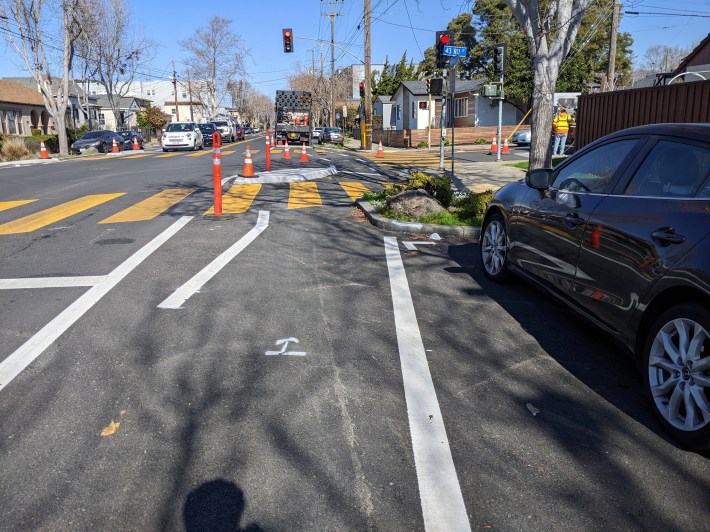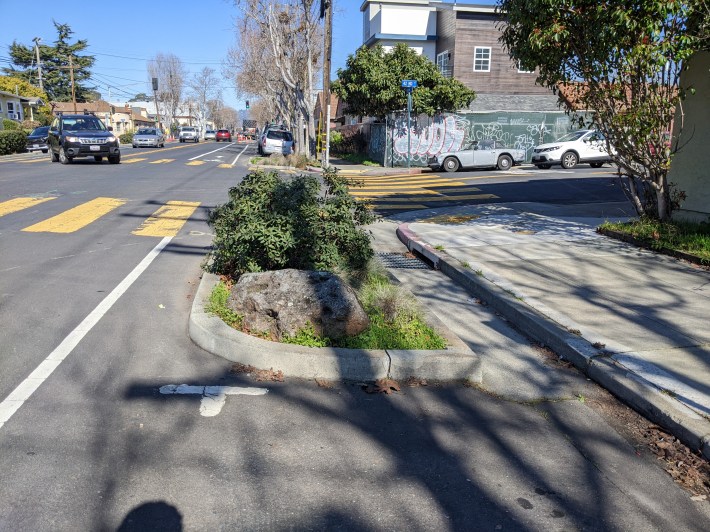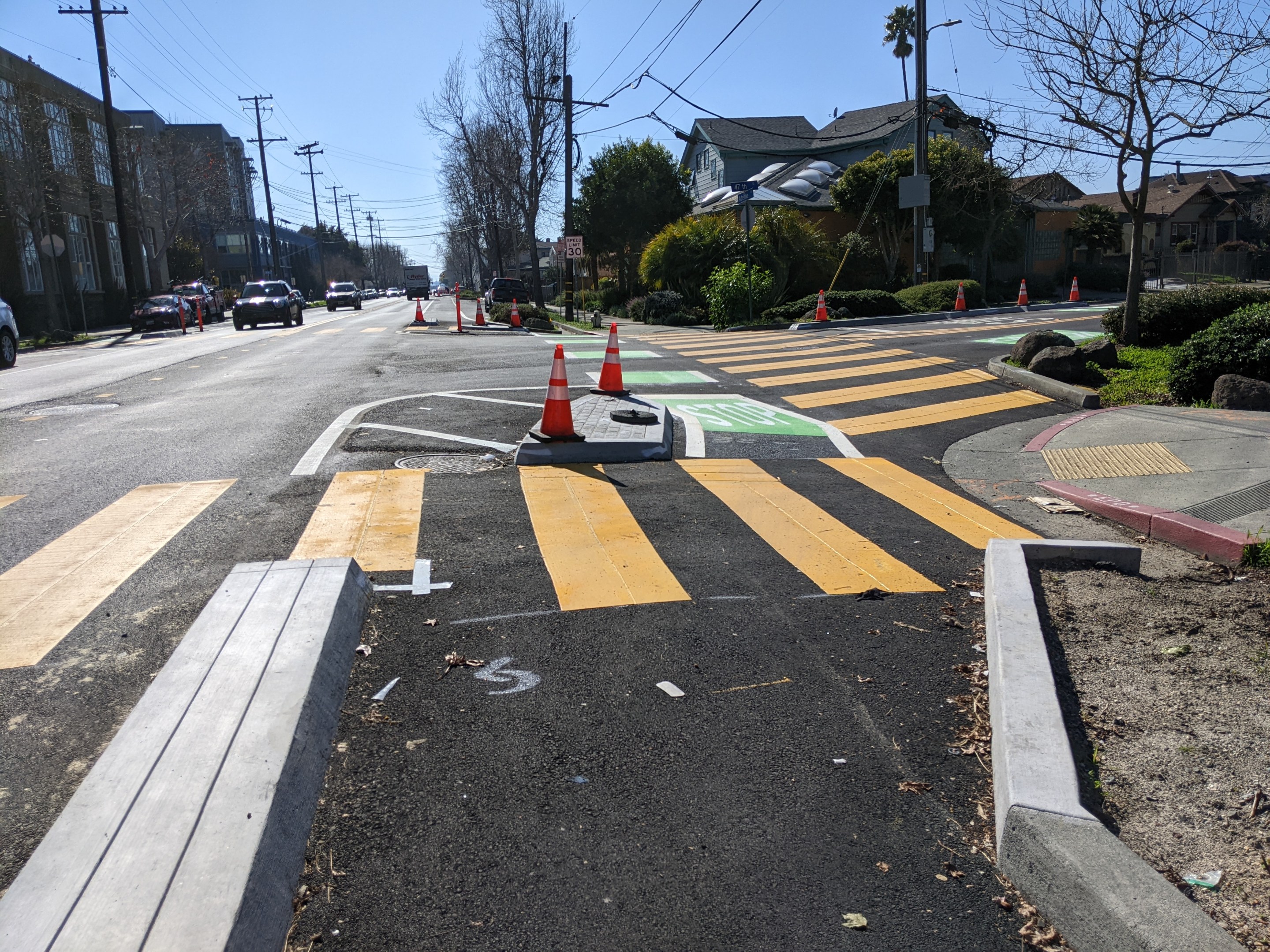Emeryville is still in the midst of upgrading Adeline and some adjoining streets, adding protected bike lanes in places and protected intersections. When I published a story about the work in January, it seemed like a great project. However, some readers took exception, such as Mary Ann Blackwell, who wrote on social media "Yes...let's put a concrete bunker in the middle of the bike lane! aka NECK BREAKER!" of the protective curb placements in the intersections.
As if to underscore that point, when I arrived at the scene today for a follow-up, a cyclist came by as I was taking notes and said "Crazy, isn't it?" as she pedaled through.
Fortunately, she did not break her neck. Also, I saw once again that truck drivers and other motorists were forced to take the turns carefully.
The treatments Crossroad Lab’s Vignesh Swaminathan is using on Adeline are an adaptation of standard Dutch protected intersections and, as such, are familiar to me. The last time I visited the area, I intentionally left my bike at home and toured on foot and--gasp--in a car with Swaminathan. I wanted to experience, first and foremost, how the treatments deter drivers from whipping around the corners. That keeps cyclists and pedestrians safe.
But this time, given the comments, I toured by bike to get the perspective on two wheels.
First, Blackwell has a point--some of the protective islands really could use an adjustment, especially the one on the northwest corner of Adeline and 47th, seen in the lead image. If nothing else, that curb needs some reflective treatments so there's no chance of missing it at night. And some more green paint to help guide cyclists around the island is a must.
Any cyclist who really doesn't want to use the new intersection treatment can just take the lane and go straight through. That said, after riding back and forth through the area several times, I'll take my chances navigating around a curb if it keeps motorists away from me. I know hitting a curb and munching out on the pavement sucks--believe me, I know--but it beats ending up under the wheels of a turning truck.

Of course, the real problem is that the protected intersections should be connected to protected bike lanes on Adeline. If they were, the "crazy" zig-zagging cyclists are complaining about wouldn't be nearly so severe.
There's another important lesson here: Swaminathan had to engineer around bioswales that were built previously in exactly the space where the protected bike lane should be. When Emeryville built these bioswales, the knowledge was readily available on how to build safe streets. But city designers let future planners sort out bike safety.
It underscores the importance of all city departments who are responsible for our streets talking to one another, studying, and making sure they at least have a baseline knowledge of proper Dutch safety designs. It also highlights how self-defeating it is to punt bike safety and fall into what I've heard Dutch engineers call the "better than nothing" trap. Those planters ultimately have to be destroyed to make these intersections and the street truly safe.

Swaminathan is building these treatments taking into account that eventually the planters will have to be rebuilt, since he hasn't been given the budget to redo them in this project. On the other hand, everything could have been done right the first time for far less money. Looking forward, advocates and cities have a responsibility today not to accept compromises and short-sightedness that paints future planners into proverbial (and in this case literal) corners.





